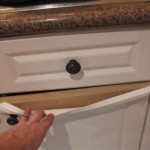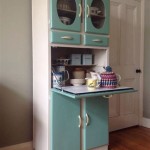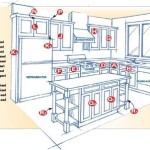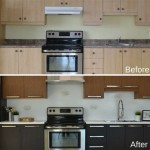How To Shine Dull Kitchen Cabinets In Russia
Maintaining the aesthetic appeal of a kitchen, especially in a climate like that of Russia, often necessitates addressing dull and lackluster kitchen cabinets. The varying humidity levels and temperature fluctuations common across the country can contribute to the degradation of cabinet finishes. This article provides a detailed guide on how to restore shine to dull kitchen cabinets, with an emphasis on methods and products readily available within the Russian market. The key to success lies in understanding the type of cabinet finish, selecting appropriate cleaning agents, and applying proper polishing techniques.
Before embarking on any restoration project, it’s crucial to identify the material and finish of the kitchen cabinets. Common materials include solid wood, wood veneer, laminate, and painted surfaces. The cleaning and polishing approach will differ significantly depending on the cabinet's composition. For instance, harsh chemicals suitable for laminate might irrevocably damage a delicate wood veneer. Observe the cabinet’s surface closely, paying attention to edges and joints, to discern the underlying material. If uncertainty persists, consulting a local carpenter or furniture restoration specialist is advisable.
Identifying the Type of Cabinet Finish
The finish on the cabinets is equally important to identify. Common finishes include varnish, lacquer, polyurethane, and paint. Varnish provides a durable, glossy finish, while lacquer offers a smoother, more refined appearance. Polyurethane is known for its water resistance and typically has a matte or satin sheen. Painted cabinets can range from glossy to matte depending on the type of paint used. Rubbing a small, inconspicuous area with a mild solvent like mineral spirits or white spirit (уайт-спирит) can help determine the finish type. If the finish softens or dissolves, it is likely lacquer or varnish. Polyurethane and paint are generally more resistant to such solvents.
Once the material and finish are identified, the next step involves a thorough cleaning to remove accumulated dirt, grease, and grime. This preliminary step is essential as it prepares the surface for polishing and ensures optimal adhesion of any protective coatings. The cleaning process typically involves using a mild detergent solution and a soft cloth or sponge. Avoid abrasive cleaners or scouring pads, as these can scratch or dull the finish further. For greasy areas, a degreasing agent specifically designed for kitchen surfaces, available in most Russian household stores (хозяйственные магазины), can be employed.
Prepare a solution of warm water and a mild dish soap. Alternatively, a specialized kitchen cleaner formulated for wood or laminate surfaces can be used. Dampen a soft cloth or sponge with the solution and gently wipe down the cabinets, paying particular attention to areas around handles and hinges, where dirt and grease tend to accumulate. Rinse the cloth frequently in clean water to avoid spreading the grime around. After wiping down the cabinets, dry them thoroughly with a clean, lint-free cloth. Ensure no water remains on the surface, as moisture can damage wood finishes and promote mold growth, especially in humid Russian climates.
For cabinets with stubborn stains or ingrained dirt, a paste of baking soda and water can be used as a gentle abrasive. Apply the paste to the affected area, let it sit for a few minutes, and then gently scrub with a soft cloth. Rinse thoroughly with clean water and dry completely. Another option is to use a commercially available cleaning product specifically designed for removing grease and grime from kitchen cabinets. These products typically contain stronger cleaning agents and should be used with caution, following the manufacturer's instructions carefully. Always test the product in an inconspicuous area first to ensure it does not damage the finish.
Polishing Techniques for Different Cabinet Finishes
After cleaning, the next step is to polish the cabinets to restore their shine. The polishing technique will vary depending on the type of finish. For cabinets with a varnish or lacquer finish, a furniture polish containing beeswax or carnauba wax can be used to enhance the shine and protect the surface. These polishes are readily available in most Russian hardware stores (строительные магазины) and department stores (универсальные магазины).
Apply a small amount of polish to a clean, soft cloth and rub it onto the cabinets in a circular motion. Allow the polish to dry for a few minutes, then buff the surface with a fresh, clean cloth to remove any excess polish and reveal the shine. Repeat the process as needed until the desired level of shine is achieved. For cabinets with intricate carvings or moldings, a polishing brush can be used to reach into the hard-to-reach areas. Ensure the brush is made of soft bristles to avoid scratching the finish.
For cabinets with a polyurethane finish, a different approach is required. Polyurethane is a more durable finish and does not typically require polishing with wax-based products. Instead, a specialized polyurethane restorer or a mild abrasive cleaner can be used to remove surface scratches and restore the sheen. These products are often available in automotive supply stores or furniture restoration shops in Russia.
Apply the polyurethane restorer or mild abrasive cleaner to a soft cloth and rub it onto the affected areas in a circular motion. Use light pressure to avoid damaging the finish. Wipe away any excess product with a clean cloth. If using a mild abrasive cleaner, be sure to rinse the surface thoroughly with clean water and dry it completely after cleaning.
Painted cabinets require a gentler approach. Avoid using harsh chemicals or abrasive cleaners that can damage the paint. Instead, use a mild detergent solution or a specialized furniture cleaner designed for painted surfaces. After cleaning, a wax-based furniture polish can be used to add a layer of protection and enhance the shine. However, be cautious when using wax on painted surfaces, as it can sometimes cause discoloration or yellowing. Always test the polish in an inconspicuous area first to ensure it does not have any adverse effects.
For cabinets with a matte or satin paint finish, a wax-based polish may not be necessary or desirable. In this case, a simple wipe-down with a damp cloth can often be sufficient to restore the shine. Alternatively, a specialized matte or satin finish restorer can be used to protect the surface and enhance its appearance.
Protective Measures and Maintenance
Once the cabinets have been cleaned and polished, it is important to take steps to protect them from future damage and maintain their shine. One of the most effective ways to protect kitchen cabinets is to apply a protective coating. This can be a clear varnish, lacquer, or polyurethane sealant, depending on the type of finish. These sealants are available in various sheens, from matte to glossy, allowing to customize the appearance of the cabinets.
Before applying a protective coating, ensure the cabinets are clean and dry. Apply the sealant in thin, even coats, following the manufacturer's instructions carefully. Allow each coat to dry completely before applying the next. Multiple coats may be necessary to achieve the desired level of protection. When applying a sealant, work in a well-ventilated area and wear appropriate safety gear, such as gloves and a respirator.
Regular cleaning and maintenance are also essential for preserving the shine of kitchen cabinets. Wipe down the cabinets regularly with a damp cloth to remove dust, dirt, and grease. Avoid using abrasive cleaners or scouring pads, as these can scratch or dull the finish. For stubborn stains, a mild detergent solution or a specialized kitchen cleaner can be used.
Protect the cabinets from excessive moisture and heat. Avoid placing hot pots or pans directly on the countertop near the cabinets, as this can damage the finish. Use placemats or trivets to protect the countertop and cabinets from heat. Also, ensure the kitchen is well-ventilated to prevent the buildup of moisture, which can damage wood finishes and promote mold growth. In regions with high humidity, a dehumidifier can be used to maintain a comfortable humidity level.
Finally, consider the effects of sunlight. Prolonged exposure to direct sunlight can cause fading or discoloration of cabinet finishes. To protect the cabinets from sunlight, consider using window coverings, such as curtains or blinds. Alternatively, a UV-resistant coating can be applied to the cabinets to protect them from the harmful effects of sunlight. Properly maintaining kitchen cabinets will not only enhance the aesthetics of the kitchen but also extend the lifespan of the cabinets, making it a worthwhile investment for any homeowner in Russia or elsewhere.

6 Tips On Cleaning Kitchen Cabinet

Best Way To Clean Kitchen Cabinets June 2025 Update

Off White Kitchen Cabinets Perfect Choice For Cozy Kitchens
5 Ways To Make Your Kitchen Cabinets Look More Expensive Without Breaking The Bank

Best Way To Clean Kitchen Cabinets June 2025 Update

All About Grey Cabinets Oppolia

Stylish Taupe Kitchen Cabinet Ideas June 2025

How To Refresh Your Kitchen On A Budget

How Kitchen Cabinet Refinishing In Enfield Ct Can Revitalize Your S Look

Top Brown Kitchen Cabinet Ideas For Modern June 2025
Related Posts








